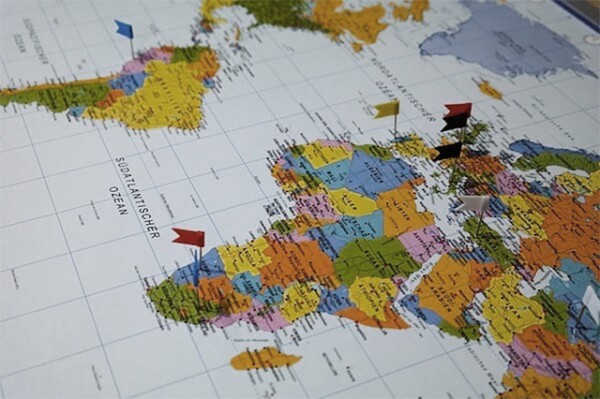Preference programs turn prime picks for duty free trade
Up in the air seems to be the modus operandi for US trade deals, and the fact that the country’s trade deals have either been withdrawn from or are under scrutiny for renegotiation, has many in the sector seeking duty free alternatives.
What brands and retailers will likely uncover—and what proponents will point to as a potential solution—are trade preference programs.
The U.S. uses trade preference programs as a way to aid developing nations by giving them greater access to the U.S. market through trade benefits, like no duties on America-bound exports.
Though trade preference programs are also under review by the trade powers that be in Washington, they are more likely to withstand an America First assessment, as they don’t yield the trade deficits the Trump Administration has harped on as being detrimental to the U.S. economy.
But the programs are still widely underused: $3 billion worth of textile and apparel imports come from the African Growth and Opportunity Act (AGOA), Qualifying Industrial Zones (QIZ) with Egypt and Israel and the HOPE/HELP Acts in Haiti, but combined, preference programs only account for 3 percent of U.S. imports.
Seeking to highlight the perks of programs like these, a panel of experts moderated by Gail Strickler, president of global trade for Brookfield Associates, shared insight on AGOA, QIZ and HOPE/HELP, at a Texworld USA seminar Monday.
As Strickler explained, the idea with trade preference programs is that they are unilateral, not reciprocal like free trade agreements, which is what may contribute to their continuance with little to no disruption.
Considering the considerable duties on textiles and apparel (as high as 32 percent on certain synthetics), “You could be saving up to a third of the cost as opposed to sourcing it somewhere else,” Strickler said, adding, “For those of you who are under pressure to reduce the cost and keep those customers coming back, this is a really good time to start looking at some of these programs.”
As part of the U.S.-authorized QIZ program, Egypt can export goods to the U.S. duty free as long as the products contain 10.5% Israeli inputs.
“It’s a win, win, win,” Gabi Bar, the QIZ Minister of Israel, said noting how one agreement simultaneously saves U.S. brands on costs for their products, and improves trade and relations for Egypt and Israel.
There are six zones in Egypt where companies can produce goods to take advantage of the trade privilege: Greater Cairo, Alexandria, Suez Canal, Central Delta, Beni Suief and Al Minya.
As QIZ minister for Egypt Ashraf El Rabiey explained, there are five key benefits to sourcing under the QIZ program: it helps businessmen from Egypt and Israel to work together, it contributes to the Egyptian economy and the Israeli economy, it helps promote peace in the Middle East, it provides jobs in some of the countries’ poorest areas, and—particularly key for brands and retailers today—it never expires.
“It’s an indefinite agreement, so you don’t have the kind of worries every year whether it will be extended or not,” El Rabiey explained. “That enables you to have planning into the future that won’t be affected sooner or later by political changes.”
What’s next in advancing this program, according to Ian Ross, CEO of Israeli textile firm Delta Galil, is trying to build a continental supply chain. Instead of taking eight to 10 weeks to get elastics shipped in from Asia, Delta Galil has been working with the Egyptian government to bring in an elastics manufacturer to supply themselves and the region.
When it comes to AGOA, the trade preference program is (for now) slated to run through 2025. Of the 41 AGOA eligible nations, 26 qualify for duty-free access to the U.S. on all clothing and some textile exports. From its 2015 renewal through 2025, exports out of Africa under AGOA have the potential to quadruple, which would mean as much as $480 million in duty savings for the U.S. market.
Haiti has been a hot topic at Texworld USA this time around as the country is working to rebrand itself as a viable sourcing option for more American brands and retailers—and so far, the rebranding is beginning to work.
As Mark D’Sa, special project director for Haiti explained, between the Caribbean Basin Trade Partnership Act (CBTPA) and the HOPE and HELP acts, the sector has largely underestimated Haiti.
“People tend to think of Haiti only for T-shirts, but very few people realize there are tuxedos being made in Haiti,” D’Sa said. “There’s industrial workwear, basic knitwear, Under Armour is already working in a few factories there, Lululemon is hoping to start by January…you can get inputs from the Dominican Republic in four hours.”
Goods can be shipped from Haiti to the U.S. East Coast in 3.5 days, smaller factories are allowing bigger brands to do bite-sized test runs before coming in in a big way, and investment interest is springing up from countries like Korea, Taiwan and Sri Lanka.
“Business is coming in,” D’Sa said. “If you’re not looking at Haiti, you are missing opportunities. You are missing tremendous opportunity.”


